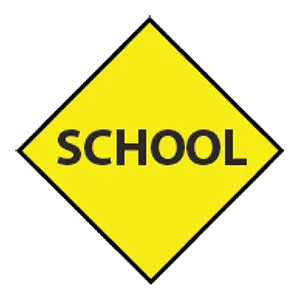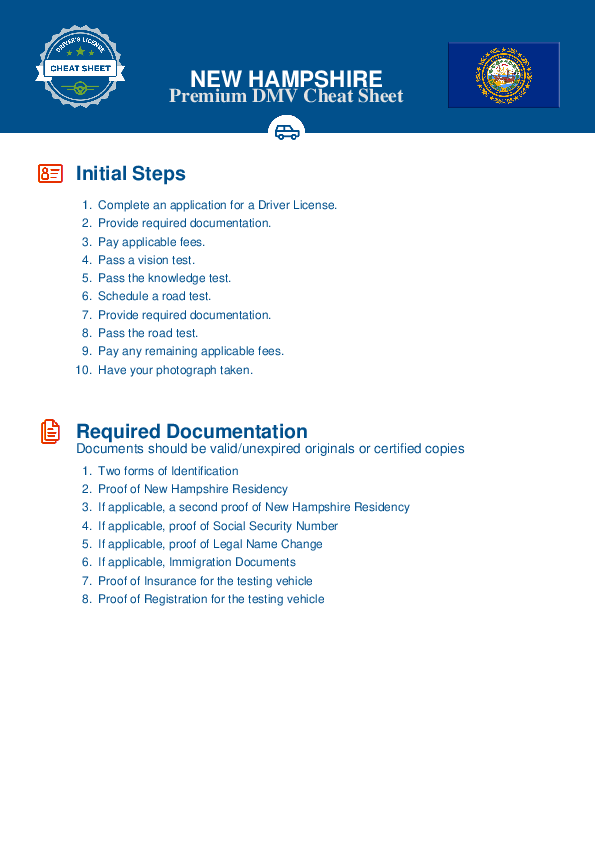FREE New Hampshire DMV Practice Test #24
The DMV practise exams in New Hampshire have been updated for January 2025. It includes questions based on the most important traffic signals and legislation in the New Hampshire Driver Handbook for 2025. To study for the DMV driving permit test and driver's licence exam, use actual questions that are very similar (often identical!) to the DMV driving permit test and driver's licence exam.
Each question on the practise exam has a tip and explanation to help you recall the ideas. Questions about traffic rules, traffic signs, and driving statutes, as well as knowledge from the Driver Handbook, will be included in the written portion of the official New Hampshire DMV test.
You must properly answer 32 of the 40 questions to receive a passing mark. Take this New Hampshire DMV practise exam to help you prepare for your instruction permit or driver's licence.
The DMV exam is offered in a variety of languages.
Using any form of testing help will result in an automatic fail, and the DMV may take further action against your driver's licence, so avoid it.
1 . If worried, nervous, angry, or crying, a driver:
You may not be able to drive well if you are worried, excited, crying, angry, or depressed. Emotions can distract you from your driving because your mind is focused on something else. Take time to calm down and get focused before driving.
2 . If you reach an intersection where you wish to turn but you are not in the proper lane, you should:
Never make last-minute turns. If you reach an intersection where you wish to turn but you are not in the proper lane to make the turn, drive to the next intersection and then make the turn from the proper lane.
3 . While driving on a two-lane road without bicycle lanes, you encounter a bicyclist traveling in the same direction. What is the safest way to pass the bicyclist?
You should pass a bicyclist the same way you would pass any other vehicle, but not so fast or close to them that you throw debris in their face or blow them around with the draft of air from your vehicle. Allow at least 3 feet of space between your side mirror and the bicyclist, or at least 5 feet on higher speed roads or when there is a group of bicyclists. Honking unnecessarily may startle riders and make them more likely to crash.
4 . You are involved in an accident. You should:
If involved in an accident, you should stop your vehicle immediately. If possible, move the vehicle out of the way of traffic. Call the nearest police agency and ask for an ambulance, if necessary. Do not move the injured unnecessarily, but attempt to stop severe bleeding with direct pressure. Wait for emergency vehicles to arrive.
5 . This sign means:

Regulation signs regulate traffic speed and movement, displaying rules which drivers must obey. This regulation sign means that right turns are prohibited.
6 . When approaching railroad tracks, you should:
When approaching railroad tracks, you should look, listen, slow down, and be prepared to stop for trains or other vehicles that may be using the rails.
7 . This sign means:

Warning signs are used to warn drivers about upcoming hazardous conditions and are usually yellow with black markings. This sign tells drivers that they are approaching a school zone and that they should slow down and watch for children.
8 . This sign means:

Regulation signs regulate traffic speed and movement, displaying rules which drivers must obey. Wherever this regulation sign is posted, U-turns are not permitted.
See the exact questions that will be on the 2025 New Hampshire DMV exam.
99.2% of people who use the cheat sheet pass the FIRST TIME
LT gives us an insight on how the cheat sheet provided her with all the study questions she needed before taking her test.
Joe initially studied with the handbook and failed his test, he eventually found us online, studied and pass his test the first time around.



